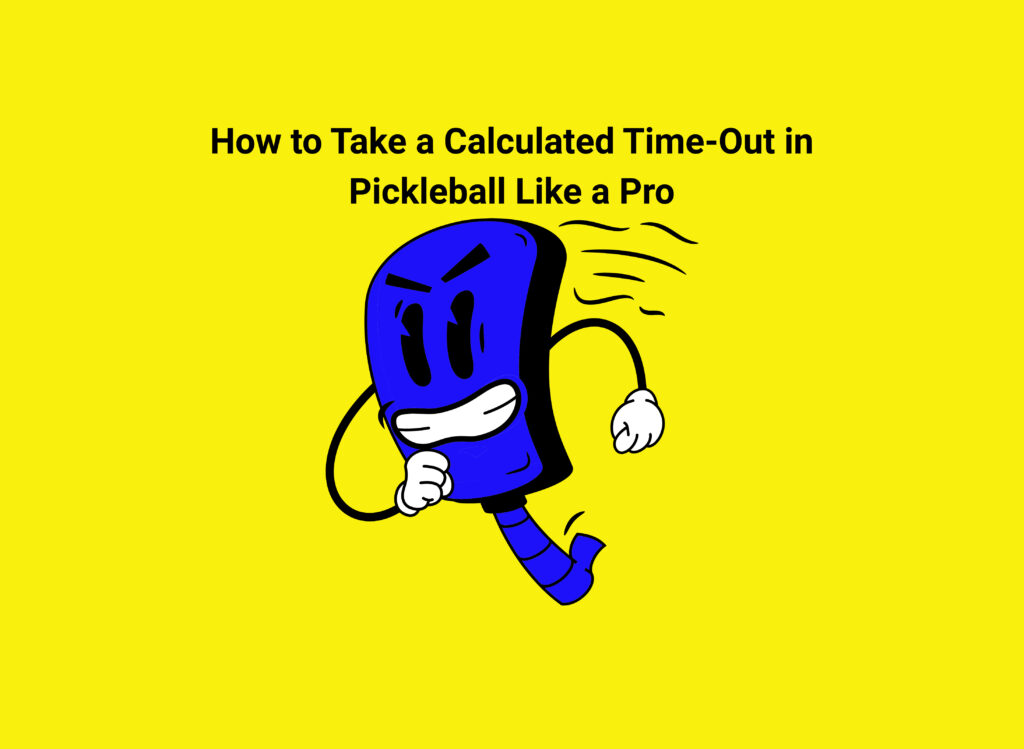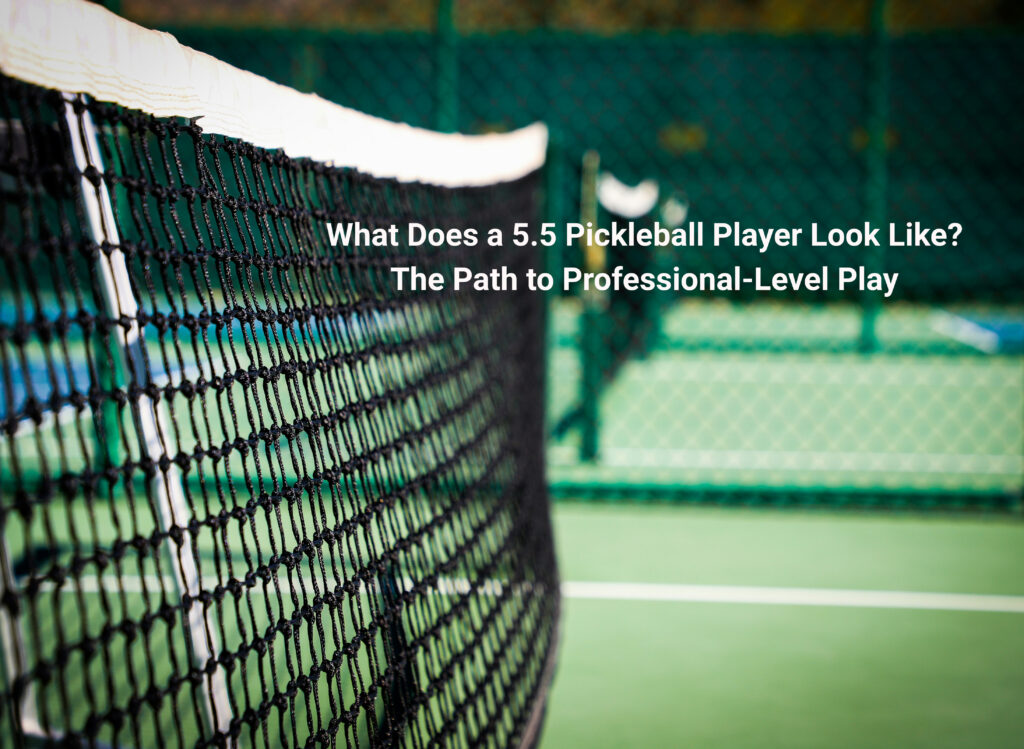Time-Out in Pickleball
A well-timed time-out in Pickleball can be just as powerful as a blistering passing shot or a wicked dink. Whether you’re playing a casual doubles match in a UK club tournament or battling it out in a national league match, knowing when and how to take a time-out is a skill that separates seasoned players from the rest. It’s about momentum, mindset, and strategy all while grabbing a quick sip of water.
A time-out isn’t simply a break—it’s a tactical tool. It’s your chance to slow down an opponent’s run, reset your own focus, correct course on a slipping strategy, or even catch your breath after a gruelling rally. And if you want to play like the pros, you need to learn how to spot the perfect moment, use the break wisely, and come back stronger. Especially here in the UK, where pickleball matches are getting tighter and more competitive, mastering time-outs could give you the edge when it matters most.
Beginners: Using Time-Outs to Regroup and Breathe
For beginners getting into pickleball across the UK, time-outs are often seen as something only “serious players” use. But the truth is, beginners can benefit massively from calling time-outs—especially when matches get overwhelming.
When Beginners Should Call a Time-Out:
✔ If you’re on the wrong end of a 5-point run and can’t seem to stop it.
✔ If you’re feeling out of breath or physically drained after a tough rally.
✔ If you’re mentally frazzled—making simple mistakes and rushing shots.
✔ If you and your partner aren’t communicating or feel out of sync.
✔ If you’re struggling with basic footwork or shot selection under pressure.
At most UK club games, beginners hesitate to call a time-out because they don’t want to seem dramatic. But there’s no shame in it. A smart time-out can stop momentum cold, give you a second to think, and help you reset physically and mentally. In fact, many club coaches encourage beginners to use at least one time-out per match—not because you’re losing, but because it teaches you to manage your mindset like a pro.
🔥 Key takeaway: For beginners, a time-out is your reset button—take one before you’re completely unravelled.
Intermediates: Shifting Momentum with Tactical Breaks
At the intermediate level, the pace of play speeds up, rallies get longer, and mental battles become just as important as physical ones. Many UK players at this stage know about time-outs but fail to use them tactically. Instead of waiting until the scoreline is dire, pro-style players call time-outs to shift momentum early.
Best Moments for Intermediates to Call Time-Outs:
✔ Right after opponents win a few lucky or fluky points—stop their surge immediately.
✔ If you notice your footwork slipping or you’re starting to rush your shots.
✔ If your opponent changes strategy and you haven’t adjusted yet.
✔ If your energy levels dip and you feel yourself getting sluggish.
✔ When you feel the vibe between you and your partner tense or disconnected.
In UK pickleball tournaments, it’s common to see intermediate players lose five or six points before thinking about a time-out—by then, it’s often too late. The pros use time-outs proactively, not reactively. A well-placed break can rob your opponent of rhythm, force them to think about their next shot, and allow you to talk strategy with your partner in peace.
🔥 Key takeaway: At intermediate level, call time-outs before the storm gets out of hand—not after you’re drowning in it.
Advanced: Calculating Time-Outs to Control the Match
At advanced levels, time-outs become a weapon of psychological warfare. Top UK players and competitors use them strategically to control the flow of the match, not just react to it. It’s about disrupting patterns, forcing opponents to cool off, and buying yourself a minute to mentally reset and rearm.
How Advanced Players Use Time-Outs:
✔ Call a time-out when an opponent is serving hot and confident—break their focus.
✔ Use it to ice the server if they’re on a run or about to serve on match point.
✔ Take a break if your strategy needs tweaking—what worked early might not work now.
✔ Use time-outs to manage your emotional energy—cool yourself if you’re frustrated or over-hyped.
✔ Call one before a critical rally to re-focus and visualise your next play.
In big UK tournaments, advanced players often plan their time-outs in advance, telling their partners, “If they get to 7 first, we’ll time-out.” It’s not emotional—it’s tactical. Time-outs stop surges, breathe life into your game plan, and reframe pressure situations. The pros don’t wait until they’ve lost six points in a row—they’re pulling the ripcord as soon as trouble brews.
🔥 Key takeaway: Advanced players use time-outs like chess moves—timing is everything.
How to Use a Time-Out Effectively
It’s not just when you take a time-out—it’s how you use it. A 1-minute break can be wasted if you just moan or panic. Instead, be intentional with every second.
What to Do During a Time-Out:
✔ Breathe deeply—slow your heart rate and clear your mind.
✔ Hydrate—sip water, don’t chug.
✔ Talk strategy with your partner—what needs adjusting?
✔ Visualise the next 2–3 points—where will you serve or return?
✔ Stay positive—no blaming yourself or your partner.
Many UK coaching sessions now include “time-out drills”—players practise calling time-outs mid-drill and using them to reframe their approach. This practice turns time-outs into natural, tactical pauses rather than signs of desperation.
🔥 Key takeaway: A time-out isn’t a moan-fest—it’s a weapon. Breathe, plan, visualise, re-launch.
Final Thoughts: Smart Time-Outs Win Smart Matches
Time-outs aren’t about stalling or giving up—they’re about taking control when the game feels like it’s slipping away. If you learn to take them wisely, confidently, and calmly, you’ll find they become one of your best assets. Whether you’re defending match point at a bustling UK pickleball tournament or battling for pride at your local club, a calculated time-out can shift the tide back in your favour.
Key Takeaways:
✔ Beginners should use time-outs early to breathe and reset when overwhelmed.
✔ Intermediates must time their breaks to halt momentum and talk strategy.
✔ Advanced players calculate time-outs tactically to control flow and psyche.
✔ Always use the break to breathe, plan, and visualise your next move.
✔ In UK pickleball, pros don’t wait for the collapse—they call time-outs to prevent it.
👀 Enjoyed this read? Fancy levelling up your game even more? Keep reading Dink Quest for the best pickleball tips, drills, and news in the UK!
🎯 Check out these popular posts next:
📬 Subscribe to the Dink Quest newsletter to Stay in the Loop and be the first to get new blog posts, UK pickleball news, tips, player spotlights and exclusive offers
👉 Click here to subscribe now
Get discounts and exclusive offers for Paddles, clothing and accessories from our shop
We’ve got plenty more where that came from! Whether you’re working on your third shot drop, curious about dinking strategies, or just figuring out how to hold your paddle without it flying across the court we’ve got you covered.
👉 Keep reading, keep learning, and keep dinking smart. Let’s grow the game together, one dink at a time. 💚
See you on the court!
The Dinkquest Team UK 🏓



